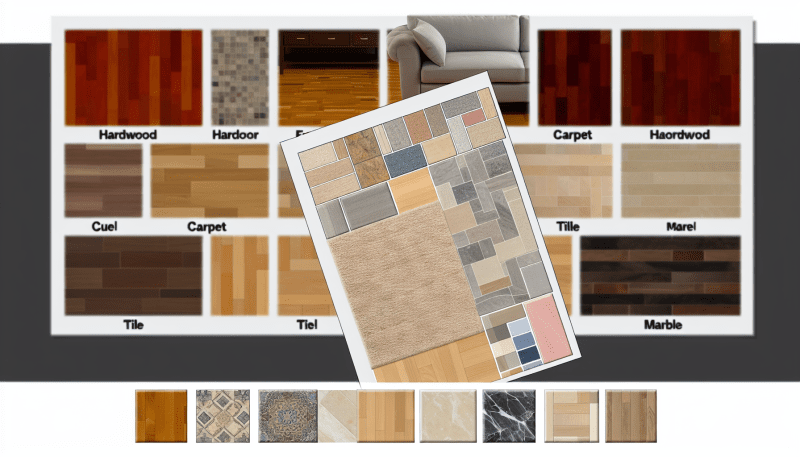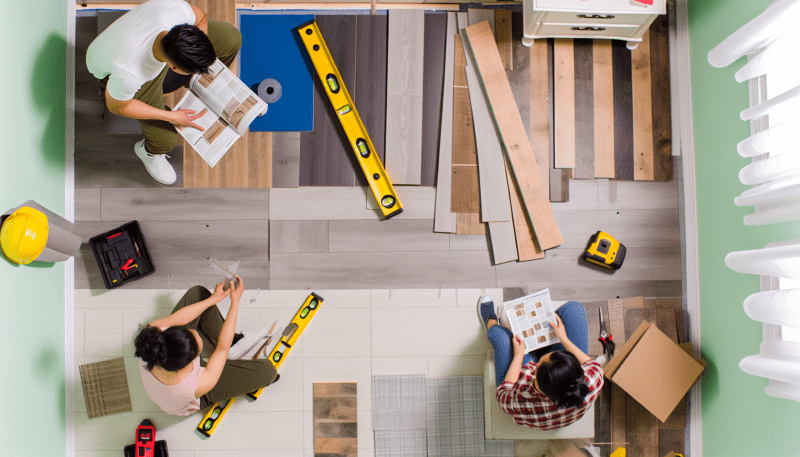When it comes to choosing the right flooring for your home, there are more options than ever before. Smart flooring isn’t just about looks; it brings tech into your living space. But what does that really mean for you? Let’s break down some of the smart flooring options available and how they can fit into your flooring cost comparison.
One popular choice is smart tiles. These are not your average tiles; they can sense temperature, track foot traffic, and even connect to your smart home system. Imagine your bathroom floor warming up just before you step out of the shower! While the upfront cost might be higher, the energy savings and extra comfort can make it worth it in the long run.
Another great option is smart laminate. It’s durable, easy to clean, and some versions can even boast features like water-resistance and anti-bacterial properties. Plus, it's less expensive than hardwood flooring, making it a solid contender in your flooring cost comparison. You can get that stylish look without breaking the bank.
If you're leaning towards sustainable solutions, check out smart vinyl. It's eco-friendly, easy to install, and resilient against wear and tear. Many smart vinyl options also come with built-in sensors to monitor humidity and temperature. This can help maintain a healthier living environment while also being budget-friendly!
Choosing smart flooring can really add a modern touch to your home. By understanding your options and what they offer, you can make a better flooring cost comparison that stands up to both your style and budget needs. Happy flooring hunting!
Comparing Costs of Popular Materials
When shopping for new floors, it's essential to understand how different materials stack up in terms of cost. This is where your flooring cost comparison comes into play. Each type of flooring brings its own price tag, which can greatly affect your budget. Let's take a closer look at some popular flooring materials and their average costs.
1. Hardwood Flooring: Hardwood is a classic choice for many homeowners. On average, you can expect to pay between $5 and $10 per square foot, depending on the type of wood and finish you choose. It's durable and can last for decades, making it a worthwhile investment if you love the look and feel of natural wood.
2. Laminate Flooring: If you’re on a tighter budget, laminate might be the way to go. It typically ranges from $1 to $3 per square foot, allowing for a significant savings without sacrificing style. While it may not have the same longevity as hardwood, modern laminate closely resembles real wood or tile.
3. Vinyl Flooring: Vinyl is another budget-friendly option, with prices ranging from $1 to $5 per square foot. It’s water-resistant and comes in a variety of designs, making it great for high-traffic areas or homes with kids and pets. Plus, vinyl is often easier to maintain and install than hardwood.
4. Tile Flooring: Tile can vary quite a bit based on the type and design. Typically, you’ll see prices from $2 to $10 per square foot. While it’s more expensive than laminate and vinyl, tile is incredibly durable and has a timeless appeal that continues to be popular in many homes.
Maintenance Expenses to Consider
When diving into your flooring cost comparison, it's essential to think beyond just the initial purchase price. Maintenance expenses can sneak up on you, impacting your overall budget. Here's what to keep in mind to avoid any surprises down the road.
Different types of flooring come with varying maintenance needs. For example:
Plus, consider any repairs that might pop up. A small scratch on hardwood might need more than a simple fix, while laminate could be easier to replace. Keeping a little cash on hand for these unexpected costs can save you a headache later.
Don’t forget about warranties and care products! Many flooring options come with warranties covering certain types of damage, but they often require specific maintenance routines to stay valid. Investing in the right cleaning supplies will keep your flooring looking its best and could potentially save you money in repairs.
Budgeting Tips for Flooring Upgrade
Upgrading your flooring can feel overwhelming, especially when you consider the variety of materials available and their respective prices. But don't worry, with a little planning, you can stay within your budget while making smart choices. Here are some budgeting tips to guide you through your flooring cost comparison.
First off, it’s essential to determine your budget before diving into material options. Take a good look at your finances and decide how much you’re comfortable spending. Having a clear budget will help you avoid overspending on flashy options that may not fit your needs. Consider not just the price of the material, but also installation costs, maintenance, and long-term durability.
Next, do some homework! Research various flooring options that suit both your style and budget. For example, laminate flooring can provide the look of hardwood without the hefty price tag. Vinyl is another budget-friendly option that’s become increasingly popular due to its durability and wide range of styles. A quick flooring cost comparison can reveal some surprisingly affordable choices.
Don’t forget about promotions or sales! Many flooring retailers run seasonal discounts or special offers. Subscribing to newsletters or following them on social media might alert you to deals that can save you money. Timing your purchase can make a significant difference in your overall costs.
Lastly, consider taking on some of the work yourself. If you’re handy with tools, DIY installation can save you a significant chunk of change. Just ensure you understand the installation process for your chosen material, as improper installation could lead to costly repairs in the future. With a bit of effort and research, you can achieve the beautiful flooring you want without breaking the bank.



